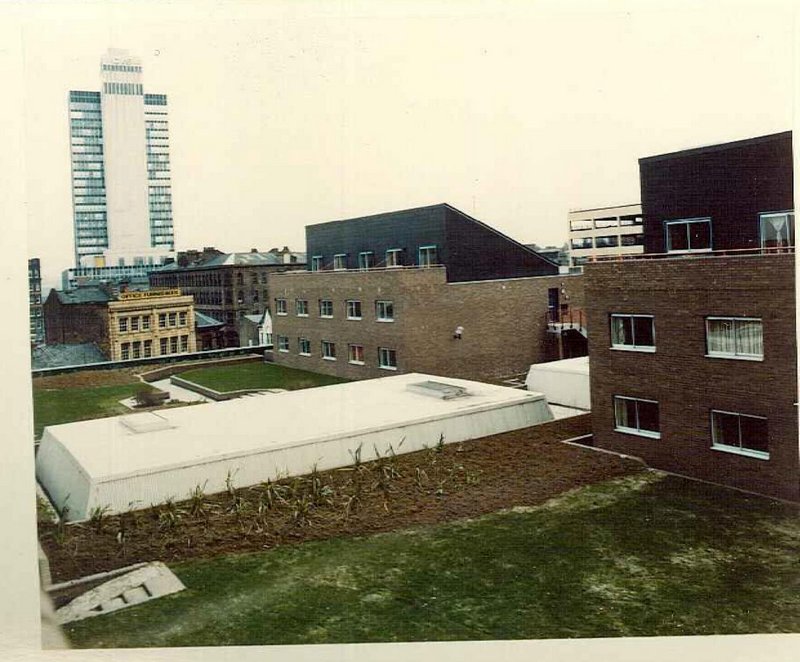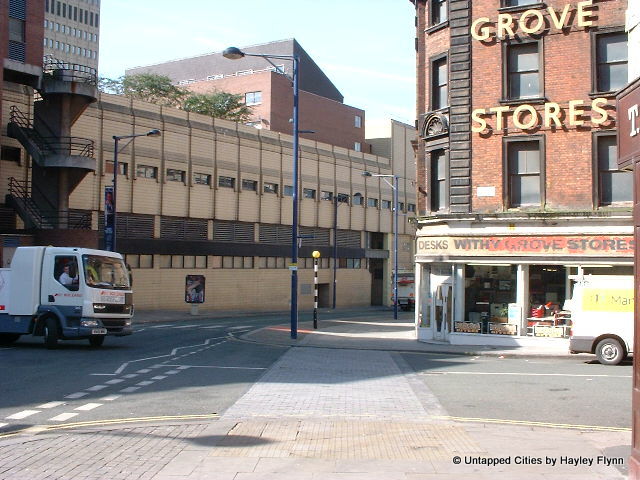
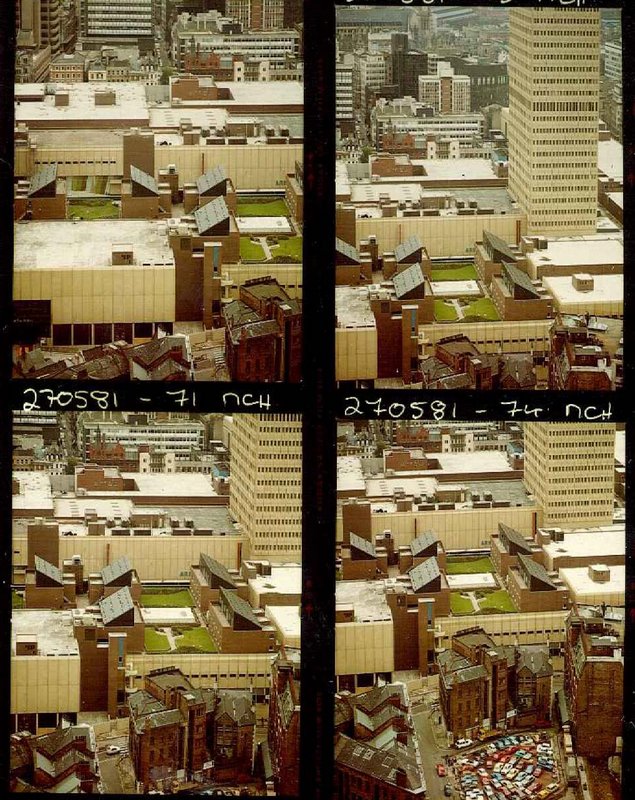 Photo courtesy Guinness Northern Counties
Photo courtesy Guinness Northern Counties
In Zhuzhou, China a group of villas have just been completed on the roof of a shopping mall. This concept has been labelled the future of urban planning, but this future had already been realised over thirty years ago at Cromford Court, Manchester.
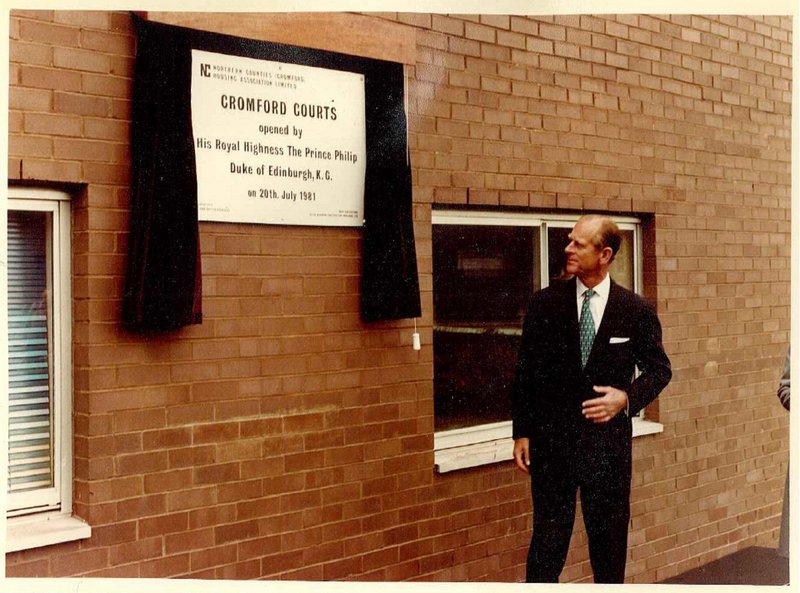 Photo courtesy Guinness Northern Counties
Photo courtesy Guinness Northern Counties
Cromford Court, known to tenants as ‘the podium’, was a housing association venture by Manchester City Council and it could be found on top of The Arndale Centre – a shopping centre that stands to this day. In all 60 dwellings could be found on the rooftops of the Arndale and they were inhabited from 1981 until 2003, when they were demolished as part of a lengthy redevelopment brought on by the devastating IRA bomb in 1996.
 View from the street in 2002
View from the street in 2002
Cromford Court took its name from the area that was levelled prior to the shopping centre itself being built. A city surveyor in 1962 said that Manchester was “crystallized in its Victorian setting“ by these dense, dirty collection of Victorian buildings that housed beat clubs and cafés and gained a reputation as a maze of inequity.
The beat clubs that saturated the area were the cause of much concern for the authorities – they were unlicensed members only venues, as such they didn’t have to abide by the same legislations as licensed public venues. This led to uncontrollable opening hours, undesirables and the prevalence of amphetamines (Purple Hearts) and marijuana.
One of the most notable of the clubs in the area was The Magic Village, the owner of which would later himself live on the eponymous rooftop houses of 80s Manchester. The club was a leaky venue with a rope swing on the dancefloor, it saw the likes of Pink Floyd, David Bowie and Jethro Tull grace the stage.
“Who needed beer all you had to do was breathe”
Andrew Gibbons, Manchester Beat
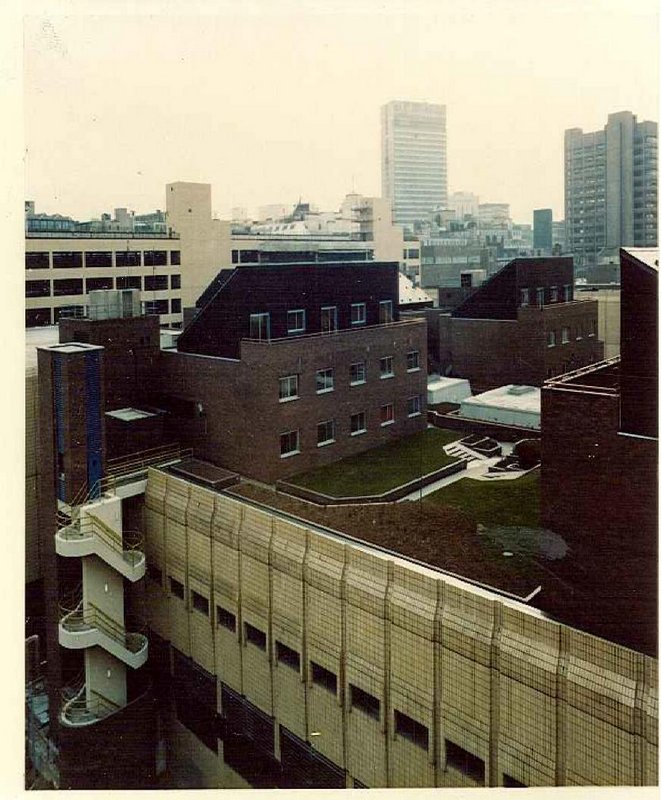 Photo courtesy Guinness Northern Counties
Photo courtesy Guinness Northern Counties
In 1965 the Manchester Corporation Act was passed meaning that the clubs could be closed at will. At the time Manchester had 250 beat clubs, just over a year later it had 3.Today the Arndale Centre that now occupies the area is the third largest city centre shopping mall in Europe and after the IRA bomb the insurance payouts made it the most expensive man-made disaster ever. The redevelopment that followed in the wake of the attack gave Manchester a chance to rebuild, but despite this the Arndale still regularly makes the lists of most ugly and least loved buildings in the UK.
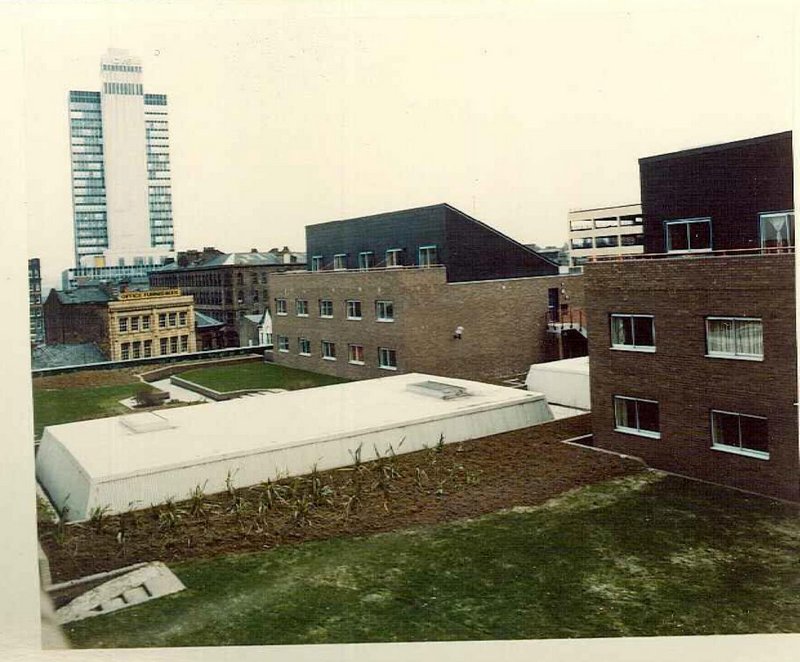 Photo courtesy Guinness Northern Counties
Photo courtesy Guinness Northern Counties
Although the houses on the roof weren’t directly affected by the bomb, when the tenants returned to the rooftops there was a general feeling of uncertainty; they knew their tenancy wasn’t finite and that the Arndale wanted to move them on and modernise and rejuvenate itself in the wake of the devastation. The houses had no place in the city’s vision for the future. Eventually, in April 2003, the last residents moved out and the houses demolished.
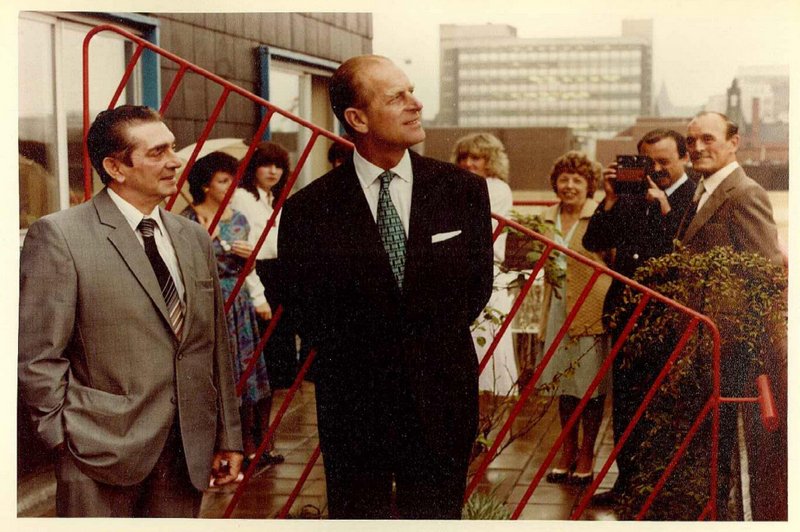 Photo courtesy Guinness Northern Counties
Photo courtesy Guinness Northern Counties
For all the ideals the rooftop location presented it did have its downfalls – the financial handing of the company was peculiar and often unfair, and the area was a go-to venue for parties which, although not a problem in itself, left the area open to crime much like the Cromford Court that came before.
It’s a bitter irony that the very things that continued to support Manchester as the Original Modern City over the years were swept under the carpet in moves to modernise the city. Cromford Court isn’t the only rooftop housing in Manchester: in 1940 the caretaker of Ship Canal House lived on the roof with his wife, up among the chimneys.
This article originally appeared on The Skyliner. Get in touch with the author @skylinermcr






